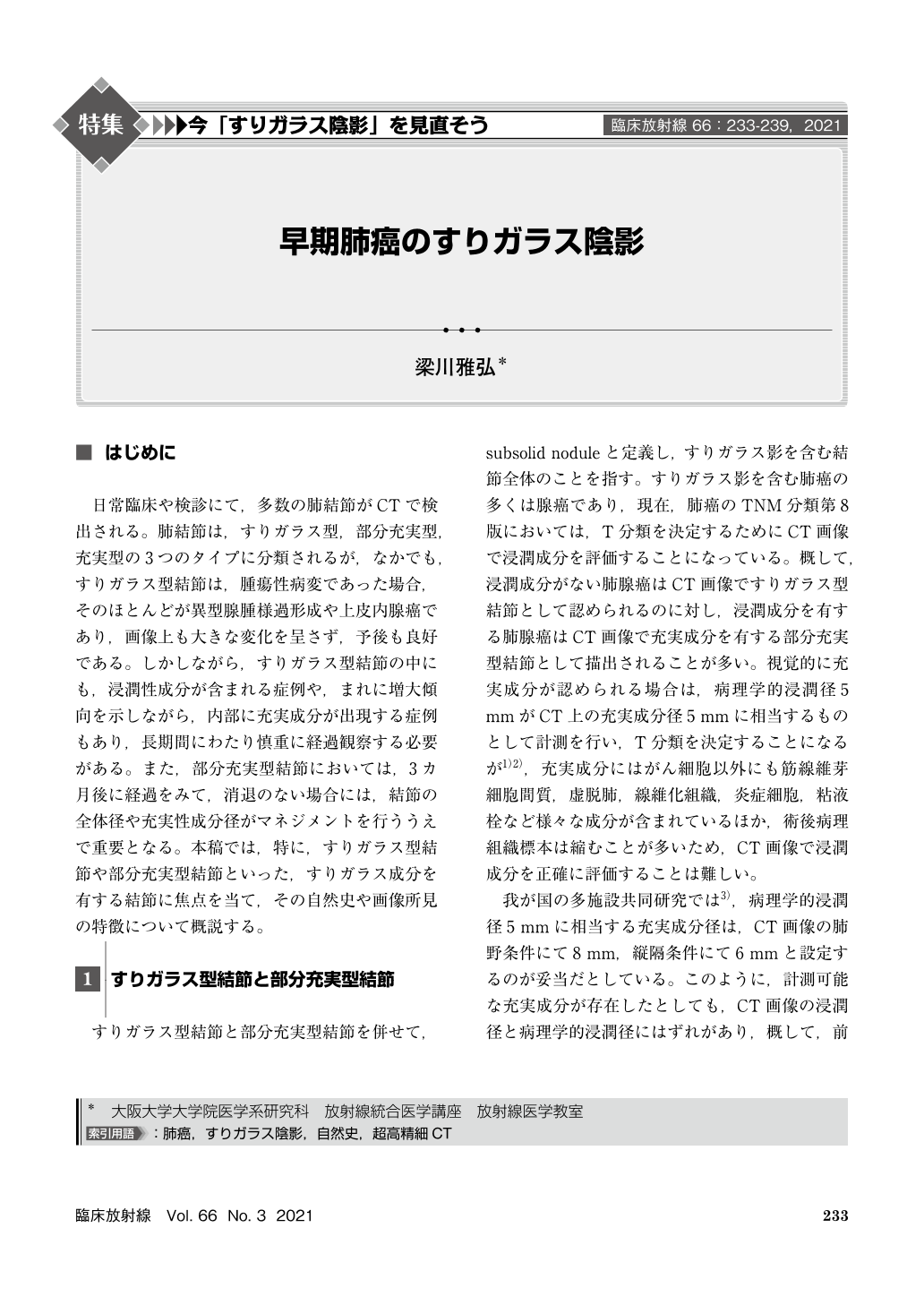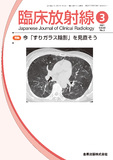Japanese
English
- 有料閲覧
- Abstract 文献概要
- 1ページ目 Look Inside
- 参考文献 Reference
日常臨床や検診にて,多数の肺結節がCTで検出される。肺結節は,すりガラス型,部分充実型,充実型の3つのタイプに分類されるが,なかでも,すりガラス型結節は,腫瘍性病変であった場合,そのほとんどが異型腺腫様過形成や上皮内腺癌であり,画像上も大きな変化を呈さず,予後も良好である。しかしながら,すりガラス型結節の中にも,浸潤性成分が含まれる症例や,まれに増大傾向を示しながら,内部に充実成分が出現する症例もあり,長期間にわたり慎重に経過観察する必要がある。また,部分充実型結節においては,3カ月後に経過をみて,消退のない場合には,結節の全体径や充実性成分径がマネジメントを行ううえで重要となる。本稿では,特に,すりガラス型結節や部分充実型結節といった,すりガラス成分を有する結節に焦点を当て,その自然史や画像所見の特徴について概説する。
A large number of lung nodules are detected on CT in clinical practice and screening. Pulmonary nodules are classified into three types:ground-glass nodule(GGN), part-solid GGN, and solid nodule. Most of the GGNs are atypical adenomatous hyperplasia or adenocarcinoma in situ, which have good prognosis with almost no change over time. However, in GGNs, there are some cases in which an invasive component is included and other cases in which a solid component appears within a GGN while showing an increasing tendency. Therefore, careful follow-up is required for a long time. Moreover, in persistent part-solid GGNs, the total and the solid component diameters are important for management. This article focuses on natural history and CT findings in subsolid pulmonary nodules while citing recent literatures. We are hoping that highly accurate diagnostic imaging and management will be devised in the future by making full use of new methods such as quantitative methods including artificial intelligence analyses of GGN using data of high spatial resolution CT.

Copyright © 2021, KANEHARA SHUPPAN Co.LTD. All rights reserved.


